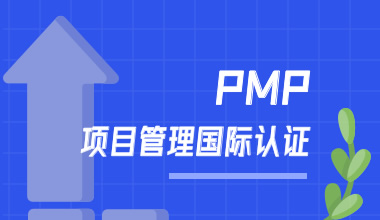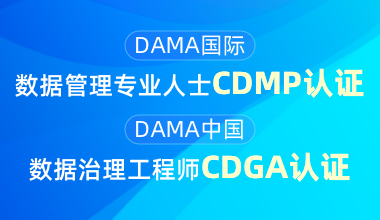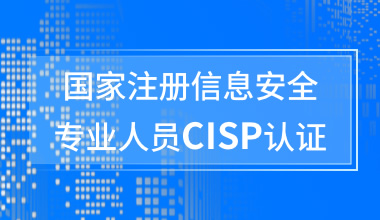Four Development Trends of Banking Data Architecture
Subscribe it by Click on the Blue words
Data is a kind of important information asset of banking industry. Banking industry is the earliest industry that our country establishes hierarchical data platforms. Because of the strong dependency on data, we always pay much attention to the construction of data platforms in banking industry. As for management, we set up special data management departments with the corresponding rules and regulations as well as workflows throughout business and IT after a long-term construction and development. As for technology, we have relatively mature management tools on data architectures, data standard, data quality and data. On the basis of this, we build a series of data applications like cockpit of management, automated unified statements, etc.
With the development of technology and analysis platforms of big data, we can summarize four directions in the development of banking data architecture:
Direction One: data quality is continuously promoted, which means that we continuously promote the construction of metadata-based data management.
Direction Two: analysis platforms of big data are constructed, which means that we expand the field of traditional data architecture to build analysis platforms of big data.
Direction Three: analysis of big data is applied, which means that we explore the application of big data analysis in the field of business, including digital portraits of users, precision marketing, risk management, etc.
Direction Four: stream-oriented computation is applied, which means that we explore the application of stream-oriented computation and the real-time monitoring of business activities and business sensitive index to reduce the risk of business operation.
◆ ◆ ◆ ◆ ◆
01
Direction One
Continuously Deepen the Construction of Metadata-based Data Management
The construction of data architectures in banking industry is relatively perfect, but there are still some common problems. For example, it is difficult to implement data standards; data quality still needs to be promoted continuously; indicator calibers are inconformity.
Metadata clarifies the business implications of data, allowing communication in the same language without ambiguity among different business departments as well as business departments and technology departments. Metadata is the basis of data standards and data quality.
We have basically set up a set of data standards in banking industry, but it is difficult to implement data standards. The reason is that the construction of data standards is finished theoretically without the tools to implement, so that it cannot be shared or implemented. Besides, lack of management on data standards themselves makes them cannot effectively adapt to the development of new business.The solution is to standardize the data standards, which is convenient to query and use for demand analysis teams and the development teams. The implement of data standards should be started at the source of data generation, including the stages of requirements writing, requirements analysis and system development. At the same time, in this process, we should continuously validate and revise data standards, which means managing them, including timely revising, changing, adding and revoking, so that data standards can always be able to adapt to development requirements of new business.
Now data quality check is always carried out after data generation. Data check, however, should be expanded to the whole life cycle of data. In other words, we should start to check data quality and timely correct it before system data modeling and system being online.
We should continuously build metadata to unify calibers of indicators. Metadata-based data standards are the unified standards to important business subjects in the aspect of data. Therefore, a consensus needs to be reached among different business departments as well as business departments and IT departments to build data standards.
◆ ◆ ◆ ◆ ◆
02
Direction Two:
Expand the Field of Traditional Data Architecture to Build Analysis Platforms of Big Data
In recent years, with the development of cloud computing, basic computing powerand the capability of analyzing models by using big data, it is possible to apply big data analysis models to the field of production.
Big data analysis models are expanded to the high-dimensional data with a large amount of information from the low-dimensional data with limited expressive power; they are developed to the strong generalization capability which is extensively effective from the weak generalization capability which is effective in a small scale; they are developed to complex models with strong expressive capability from simple models with weak expressive capability. We gradually explore applying big data analysis technology in the field of production in banking industry.
To build big data analysis platforms, we should elevate the current data passive-support business to data active-service business and make part of the business areas to reach the level of data innovation. Besides, we should integrate inside and outside information in banking industry and give full play to the advantages of new technology of big data to build unique and industry-leading intelligent data” analysis capabilities
◆ ◆ ◆ ◆ ◆
03
Direction Three:
Explore the Application of Big Data Analysis in the Field of Busines
Big data analysis will be an important support for business in the future, which will bring great changes to operation models of business and IT. Although the application of big data analysis in the field of business is still at the exploratory stage, it is the key for banking industry to keep ahead.
In the future, we will build customer-centered digital strategy in banks, including digital portrait, product design and optimization, digital marketing and digital risk prevention. Thereinto, the strategy of digital portrait includes micro portrait of customer, digging of high net worth potential customers, multi-dimensional customer segmentation and waking up of dormant customers. The strategy of product design and optimization includes transboundary product development, product optimization and innovation as well as innovation of products. The strategy of digital marketing includes marketing planning and support, differentiated advertisement putting and precision marketing. The strategy of digital risk prevention includes evaluation of customer risk credit, evaluation of customer individuation, automatic valuation of collateral value and real-time anti-fraud.
◆ ◆ ◆ ◆ ◆
04
Direction Four:
Explore Stream-oriented Computation and Real-time Business Monitoring to Reduce Business Risk
Traditional IT systems can only provide T+1 reports of statistic and analysis composed of simply summarized data. In current constantly changing marketing environment, faster response capability is needed in banking industry to give a quick response to requirements of customers and gain an advantage in fierce competition. Thereinto, it is very important to grasp real-time operation conditions of a variety of businesses, analyze business activities comprehensively and make targeted decisions. To finish the above works, we often need to stride over single business departments and IT application systems as well as have real-time data processing capabilities.
Platforms of stream-oriented computation provide capabilities of highly reliable, fault-tolerant and high-performance capture, process and computation to massive real-time events. Besides, as a kind of public capabilities, the capabilities can be provided for the requirements of real-time computing business scenarios in every system and they can provide capabilities of centralized and unified public support for real-time computation of every application system. Compared with traditional application systems, platforms of real-time events processing is massive, streaming and real-time computing models without limitation of department systems. In other words, with real-time and streaming computation, it can push display proactively, which are in line with the future trend of real-time processing.
By using stream-oriented computation, we achieve the monitoring to business activities in banking industry, including financial indicators monitoring, business operation monitoring, real-time monitoring to online banks, business audit tointernal staffs and IT system risk management. After real-time, comprehensive and visualized understanding the current implement situation of a various of businesses, it can provide decision-making supports for business management and optimization of banking industry.
相关阅读
-
全国报名服务热线
 400-626-7377
400-626-7377
-
热门课程咨询
 在线咨询
在线咨询
-
微信公众号
 微信号:zpitedu
微信号:zpitedu


 400-626-7377
400-626-7377





